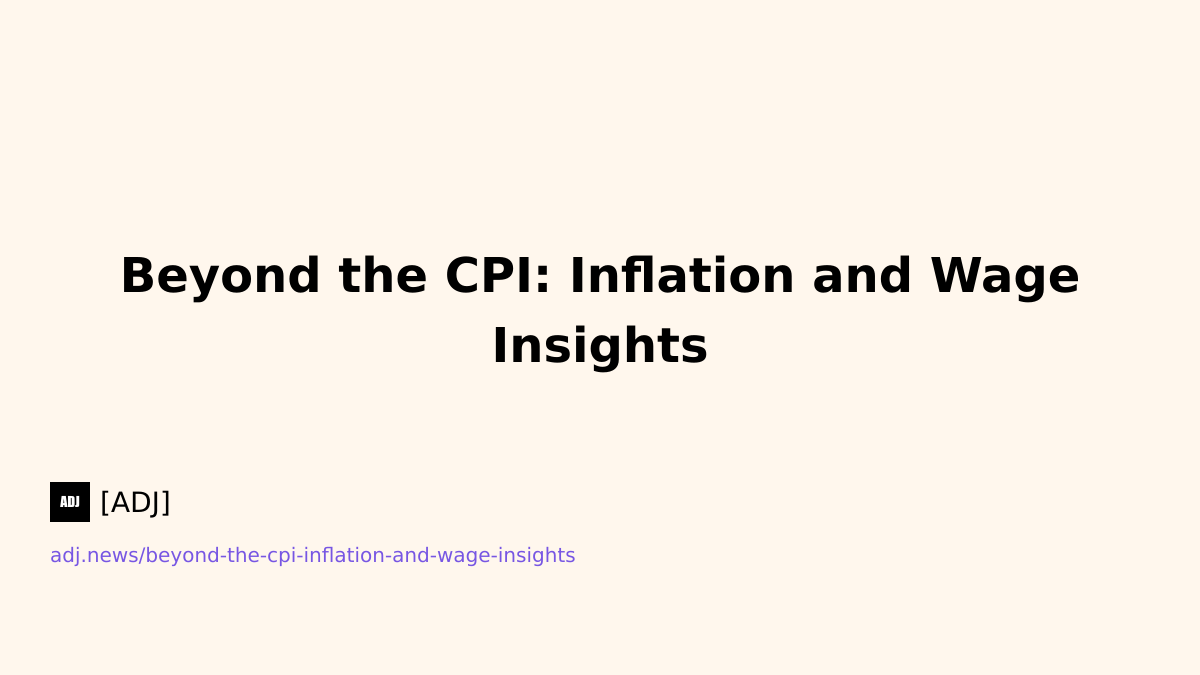Check out the new and improved Adjacent News API! The Adjacent News API provides robust access to data and prediction markets across multiple platforms, along with related news and market analytics. We’re empowering developers to build powerful applications that leverage market data, perform advanced search, and access insightful analytics.
TL;DR:
- June 2025 CPI surged 0.3% month-over-month, lifting the annual rate to 2.7%, with core inflation reaching 2.9%.
- Recent data suggests a notable chance of continued inflation pressure into July, with potential yearly increases.
- Forecasts indicate a risk of inflation climbing above 4% in 2025, amid economic uncertainties.
- Optimism grows for wages potentially outpacing inflation in 2025, offering some consumer relief.
- Trade tensions escalate with a looming 30% EU tariff deadline on August 1, though a last-minute deal remains possible.
- US trade policy shifts toward a more protectionist stance, influencing global economic dynamics.
Market Snapshots
- Inflation in July? (CPI YoY) (Kalshi)
- July Inflation - Annual (Polymarket)
- July Inflation - Monthly (Polymarket)
- How high will the inflation level get in 2025 (Kalshi)
- How high will inflation get in 2025? (Polymarket)
- Will wages be above inflation this year? (Kalshi) 64% chance
- 30% EU tariff in effect by August 1? (Polymarket) 28% chance
- Trump agrees to tariff agreement with European Union in July (Polymarket) 44% chance
Event Breakdown
Where is inflation headed?: Inflation dynamics are shifting, with fresh data painting a complex picture. The June 2025 CPI rose 0.3% month-over-month, pushing the annual rate to 2.7%—the highest since February—while core CPI edged up to 2.9%, just below the 3.0% forecast, per the latest overview. For July, Polymarket indicates a 39% probability of monthly inflation topping 0.3%, and Kalshi’s annual CPI market suggests a 67% chance of reaching at least 2.7% year-over-year.
Looking ahead, Kalshi’s 2025 forecast shows a 23% likelihood of inflation exceeding 4%, while Polymarket pegs the chance of surpassing 4% at 16%.
These trends reflect tariff impacts, with an increasing chance of semiconductor tariffs, alongside easing shelter costs (down to 3.8% YoY), influencing the outlook. The June data also highlights rising food prices (3.0% annually) and a sharp 8.3% drop in gasoline, adding volatility.
Wage growth relative to inflation remains a focal point. Kalshi’s market on wages outpacing inflation in 2025 stands at 64%, up from 58% a month ago, signaling cautious optimism amid labor market tightness. This metric is critical—positive real wage growth could boost consumer spending, but tariff-driven cost pressures threaten to erode gains, as noted in the CPI analysis.
Fund managers can use this data to fine-tune strategies. A higher inflation trajectory might drive investments in gold or short Treasury positions, anticipating import cost hikes and delayed rate cuts—now less likely in July, with September eyed instead. Conversely, a softening short-term outlook could favor domestic equities as a hedge against trade uncertainty, aligning with our US Tariff Index’s 40.3% hawkish trend. The wage-inflation interplay offers further cues: positive growth could lift retail stocks, while persistent inflation risks favor defensive assets like utilities.
The June CPI’s tariff passthrough—evident in furniture and auto prices—ties to a 10% Polymarket odds of 5%+ annual inflation, hinting at Fed tightening and bond yield shifts. Wage market volatility reflects labor resilience, a key economic cycle indicator for macro funds. Businesses can adjust supply chains, while policymakers might reconsider stimulus amid stagflation risks. The convergence of Polymarket and Kalshi data, bolstered by liquidity, provides a robust barometer for navigating 2025’s inflationary and wage challenges.
This data-driven lens empowers stakeholders to anticipate trends, from consumer strain on essentials to investment shifts, shaping a nuanced economic future.
Related markets & forecasts:
- Core inflation in July? (Core CPI YoY)
- Core inflation in 2025?
- Inflation in 2025?
- Price of a dozen eggs in July?
Long-Tail Radar
The “Long-tail Radar” this week spotlights the “30% EU tariff in effect by August 1?” market, with $10,161 in volume, as a key indicator of escalating US-EU trade tensions. Paired with the “Trump agrees to tariff agreement with European Union in July” market ($70,456 volume), these markets reveal a critical juncture. The former’s odds, tracked against the latter, suggest a 28% probability of tariffs hitting by August unless a deal emerges, per recent data.
This interplay reflects real-time sentiment, with the higher-volume Trump-EU agreement market signaling cautious optimism over the last few days. However, if you zoom out, the Trump-EU agreement market has been trending downward over the last month, down from a high of 88% on July 8th.
Again, the US Tariff Index, trending hawkish at 40.3%, reinforces this narrative, showing a shift toward protectionist policies. This aligns with EU divisions and Trump’s framing of tariffs as a correction for past imbalances, complicating a swift resolution. The chart comparing these markets highlights a divergence: the tariff market’s lower volume but steady odds contrast with the agreement market’s liquidity, suggesting investors see a deal as plausible but not guaranteed.
These markets matter due to their economic ripple effects. A 30% tariff could slash EU growth significantly, forcing export model rethinking, while a last-minute agreement might stabilize transatlantic trade. This volatility offers opportunities—shorting EU equities or hedging with commodities like gold amid tariff risks, or pivoting to US industrials if a deal emerges. The hawkish tariff trend also signals potential inflation spikes, impacting bond yields and consumer costs. With August 1 looming, these markets provide a probabilistic lens for navigating uncertainty, making them essential for strategic foresight.
Questions we asked
Follow the Adjacent community on Metaculus here!
Ready to trade the future? Follow us on X @AdjacentNews for real-time market takes. Explore adj.news for the full scoop, or tap our API to crunch the data yourself. Chat trades and tactics with the crew on Discord—where the sharpest minds meet. Got questions? Hit up [email protected]. Adjacent’s your edge in the InfoFi game—plug in, profit, and shape what’s next.

